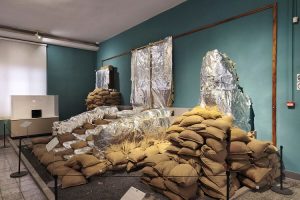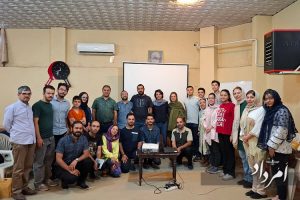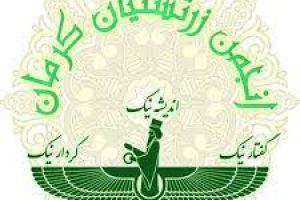The Baluch people’s handicraft has such an impeccable reputation that there is no need nor reason to introduce them. The Baluch people still continue to value their handicrafts. Despite the abundance of imported and brand-new apparel in Sistan-Baluchistan’s markets! Notwithstanding these circumstances, “Ahanjag” ought to be regarded as a commendable illustration of the textile industry and an integral component of the Baloch garments, be it visually appealing or lasting, to which the residents of that particular region of Iran remain indebted!
Ahanjag, being a significant handicraft from Sistan and Baluchistan, has been recognized as having immense value in the minds of that nation and revered as a sign and symbol of stability in the face of hardships.
Ahanjag is actually a hosiery. It was once woven using camel wool; presently, yarn is employed to stitch each strand. It is a colored cord measuring 1.5 meters in length. Historically, the Ahanjag were crafted from uncolored camel wool. However, with the advent of vibrant fibers, these garments have taken on a vibrant hue and enhance the aesthetic appeal of Baloch attire.
Ahanjag cord is multi-layered and broad. If to be used for tying travel items and cargo, then it is woven lengthier. Therefore, Ahanjag cord is not used only for men’s trousers; a variant of it is also used for routine purposes.
For weaving Ahanjag, six triangular nails are inserted into the ground the fiber wool or yarn are woven around the nails. The term for this part of the craft is “chelehkeshi”. Then, the process of weaving the Ahanjag starts, and with the elegance and skill that emanate from master Ahanjag weavers, they pass wool fibers (or yarn) through wooden straws and continue weaving indefinitely using markings. However, upon completion, exquisite beads adorn the end strands on both sides of the cord. These round balls are called “pul” and adding it to the Ahanjag is regarded as an indication of the craftsmanship’s aesthetic appeal.
As mentioned before, the art of weaving Ahanjag has been included on the list Iran’s intangible heritage. Concerns regarding the potential devastation of Iranian handicrafts will be alleviated as a result.
Baluchi clothing is both simple and attractive. Their attire is mostly white. The shirt that is worn over the trousers covers the full height of the person wearing it. A lengthy shawl is tied up on their heads, covered with a sweatband, known as “supi”. The loose trousers worn by the people, known as pajamak, are held up with ahanjag, like a belt. Within the Balochi language, their footwear is referred to as Kush or Katuk. Katuk shoes have a wooden outsole and an upwardly pointed tip, rendering them comfortable for walking. Additionally, consider that the names of Baloch men’s garments are Chartake or Karte. Let us add here, that their garments are known as “karte” or “chartekkeh”. These garments are handwoven and are part of the people’s handicraft.
Others have accurately stated that the attire of men and women in every region of Iran is appropriate for the climate and weather of that expanse of our country, Iran, a point that we have previously addressed. Each has its own unique attractiveness and appearance, and suitable for any taste. Ahanjag, too, as part of the clothing of Baluchi men, is designed to suit the lifestyle and vocation and is another sign of the beauty of handicraft of the people of Iran.










